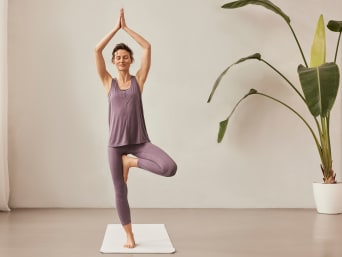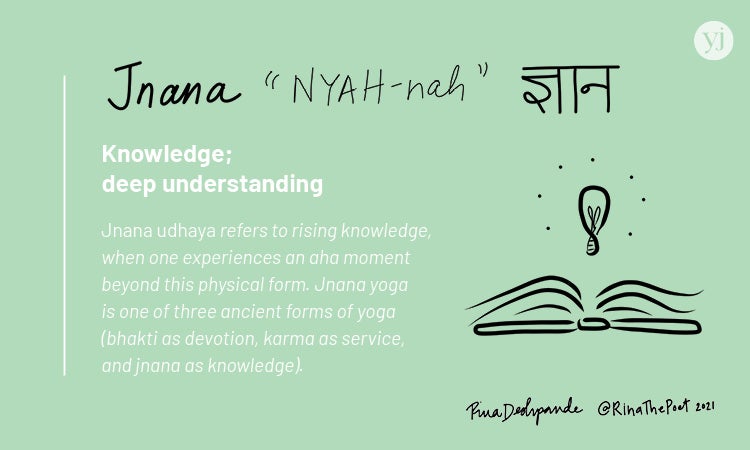
My webpage contains three phases of class videos that will teach you the basics of yoga for beginners. Each phase has yoga sequences to teach correct form, core activation (breathing), strength, flexibility and strength. I hope that this article provided you with valuable tips. Additional tips are provided below. You will learn how to do many variations of the same yoga poses in this sequence. Relaxation techniques can be found in the sequence, which also includes meditations and stretching.
It's easy to do
The second easy pose in the yoga for beginners sequence is the wall pose. This pose is suitable for both beginners and more advanced practitioners. Move your legs along a wall and your torso should be parallel to it. A roll of blanket should be placed underneath your lower back. Spread your toes wide, keeping your weight evenly distributed. Now, you can relax your shoulders. Once you have mastered this pose, you can progress to other standing poses.
Standing Knee Pose, the most difficult pose for beginners, can be modified with blocks. Simply place a block underneath your right foot and extend your right knee up to the ceiling. Your buttocks should be engaged and you can then balance. As far as possible, extend your knees. If it is difficult, open your pelvis slightly by performing Parsvakonasana, or Trikonasana.
Child's Pose
This pose is very energizing and can be achieved by sitting on your heels or kneeling. Then, open your knees wide. Lower your chest to the floor. The pose can be modified depending on your ability. Child's position strengthens the abdominal muscles and promotes balance. Ideally, you should practice this pose every day to improve overall health. But for the beginner, it's not enough to learn a new pose - it also needs to be performed several times a week.

If you're not yet flexible, you may want to start with a different pose. The Child's Pose allows for the body to relax and can be used to calm an active mind. Use props, such as a blanket or a pillow, if you have trouble with balance. Close your eyes when practicing this pose and pay attention for body signals.
Forward Fold
Forward fold is a fundamental yoga pose that many instructors teach. They can also use the sequence to organize their own home practice. Learning proper sequencing will allow you to elevate your forward bends and reflect more deeply on the world around you. Here are three tips for sequencing your yoga practice:
Use a blanket or a book to help support your body when performing seated forward folds and legs up the wall poses. To wear high-heeled shoes while performing the Forward Fold, a folded blanket can also be used. You can then transition from squat position to forward fold. You can also try standing forward fold if you are unable to do it.
Low Lunge variation
The Low Lunge, also known as LL, is a pose that you will most likely have encountered in your first yoga class. You will be able to place your knee over your ankle while your body is at the level of your hips. Your head will then be lifted. You need to be able to perform this asana correctly before you can start. There are several methods to properly perform LL. First, be sure to use the correct form.
Step one to LL is to let go of Dekasana ii. Then, place your right knee on the floor. Then, raise your arms to form a hand-and-finger namaste sign. Your right knee should be at your left hip. Now, you can inhale while keeping your 90-degree angle in left leg. This pose requires deep breathing, and you'll need a blanket for your knees.
Tadasana

Tadasana yoga is a great option for those who are just beginning to do yoga. This sequence focuses on the fundamental yoga posture, Tadasana. For this pose, you will need to lie down at the waist and then place your hands on your parallel feet. You will lift your tailbone by bending your knees. Once you're comfortable holding this pose, you can try it with either foot.
Tadasana (Mountain Pose) is a great way of developing a balanced sensation in all standing poses. This pose requires that you distribute your weight evenly from front to back and to the inside and outer parts of both feet. Your big toe should be the focus. You must also keep your ankles neutral in this pose. This sequence is excellent for beginners. It focuses on alignment, which makes it easy to feel comfortable when you practice yoga.
FAQ
What are the 5 ways you can improve your mental and emotional health?
-
Exercise - Physical activity improves brain function and increases energy levels.
-
Sleep - A good way to reduce anxiety and stress is to get enough sleep.
-
Nutrition - Eating healthy foods such as fruits and vegetables will help keep your body strong and energized.
-
Meditation - Meditating regularly reduces stress and anxiety.
-
Socialization: Spending time together with family and friends, keeps us happy.
Are there any problems with me if my depression is persistent?
Depression is a common problem among teens. However, it's important to realize that many teenagers struggle with depression.
It doesn't mean you are insane or weak. People who are depressed don't know it. Depression is a medical condition.
There are many types of depression. Some people experience only sadness. Other people may experience other emotions as well. There are many levels of severity.
Some people experience mild depression, while others have severe cases. It's important that you understand that depression doesn't always have to be bad. Sometimes, depression helps us to cope with stressful events.
If you are feeling unmotivated, sad or tired, it is a good idea to see a doctor. Your doctor can diagnose you and determine whether you need treatment.
What are some examples?
Any condition that causes serious distress or impairment of functioning is known as mental disorders. Mental disorders include anxiety, bipolar disorder (depression), schizophrenia, borderline personality disorders, obsessive-compulsive disorders, post-traumatic stress disorder (PTSD), eating disorders, substance abuse and other.
Why is it important to improve your emotional health?
Well-being and happiness are tied to emotional well-being. You won't be able perform at your best if you aren't emotionally healthy. Depression can make it difficult for people to perform at their best. You may also feel anxiety, panic attacks, insomnia and other symptoms. The good news is that these conditions can be treated successfully with medication and therapy.
How can you improve your wellbeing?
The state of being well is defined as the "state of physical, mental and spiritual well-being." Many factors can affect our well-being. These include family, work, family health, relationships with others, education, finances and community. Your first step in improving well-being and your quality of life is to identify which areas need improvement. Next, take steps to improve these aspects.
Here are five methods to improve your health and well-being.
-
Exercise - It boosts endorphins, which can make us happier.
-
Sleep - Sleeping for more than six hours a night reduces anxiety and stress.
-
Nutrition – Healthy foods such as fruits & vegetables can boost your mood.
-
Meditation - Regular meditation can reduce stress and anxiety.
-
Socialization - Spending quality time with friends and family makes us happy.
What is Positive Psychology and Why Is It Important?
Positive psychology focuses on what makes us feel better about ourselves, such as happiness, optimism, gratitude, hope, love, kindness, compassion, forgiveness, courage, humility, curiosity, empathy, spirituality, and meaning. Positive psychology seeks to make individuals happier, healthier and more intelligent through self-improvement.
There are two types if positive psychology: trait-positive psychology and process-positive psychology. Trait psychology studies how people naturally behave. The process of positive psychology studies how to use specific strategies to achieve certain goals.
Statistics
- According to the National Alliance of Mental Illness (NAMI), one in five Americans experiences mental health issues which translates to more than 40 million adults a year. (doctorondemand.com)
- It does have some influence, but not nearly as much as we might think, so focusing less on attaining wealth will likely make you happier (Aknin, Norton, & Dunn, 2009); (positivepsychology.com)
- More than 40 million adults in the United States have an anxiety disorder, but less than 37% of people seek mental health treatment for their symptoms. (talkspace.com)
- More than 50% will be diagnosed with a mental illness or disorder at some point in their lifetime.3 (cdc.gov)
- Neuropsychiatric diseases are the leading cause of death and disability in the U.S., accounting for 18.7 percent of all years of potential lifespan loss and premature mortality.
External Links
How To
Why is mental health so important? And what steps can you take to improve it
Mental health refers the state of your mind, and emotional well-being. It affects your mood, behavior, thoughts, actions, relationships, sleep, eat and work.
Everyone should be concerned about mental health. Depression is often referred to when talking about mental health. Depression is a serious illness that strikes millions of Americans each and every year.
Because it requires medical intervention, depression is sometimes called clinical depression. There are many kinds of depression.
According to the National Institute of Mental Health, depression is "a common mood disorder that causes depression most of the time, a loss of interest in nearly all activities, feelings of guilt, low self-worth, disturbed sleep, appetite, poor concentration, thoughts of suicide or death."
There are many ways people can feel depressed. Others may feel helpless, sad, hopeless and unmotivated. Others may feel depressed, anxious, restless, agitated or fearful. Others may not feel anything at all.
Depression can be treated. There are many treatments for depression, including medication, psychotherapy as well as diet and lifestyle modifications that can help. If depression isn't treated, it can cause serious problems at home and school as well as in your relationships.
Depression is more common for women than for men, though it can also affect boys and girls. In fact, depression is the leading cause of disability worldwide for men and women ages 15-44 years old.